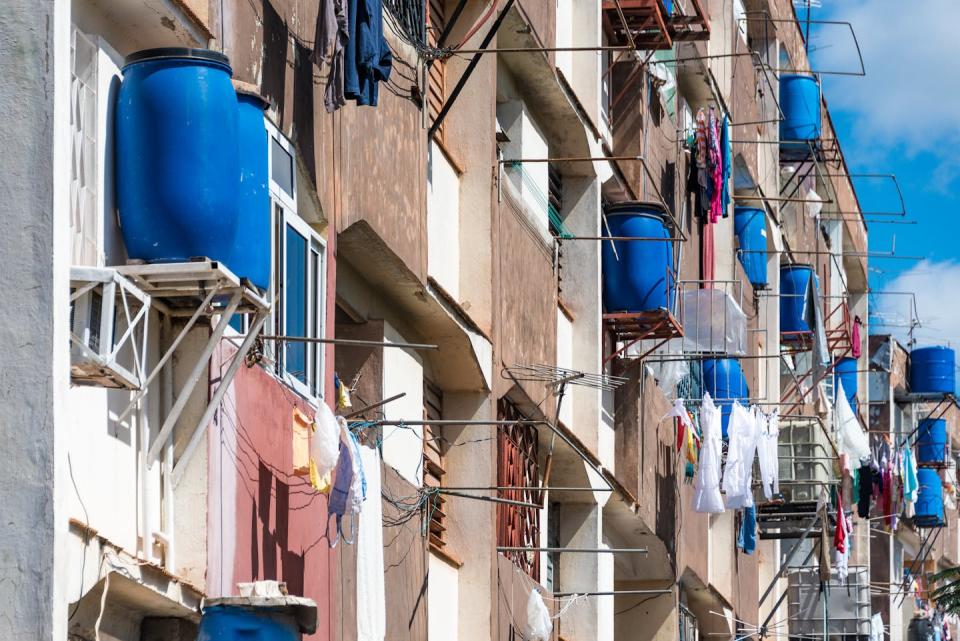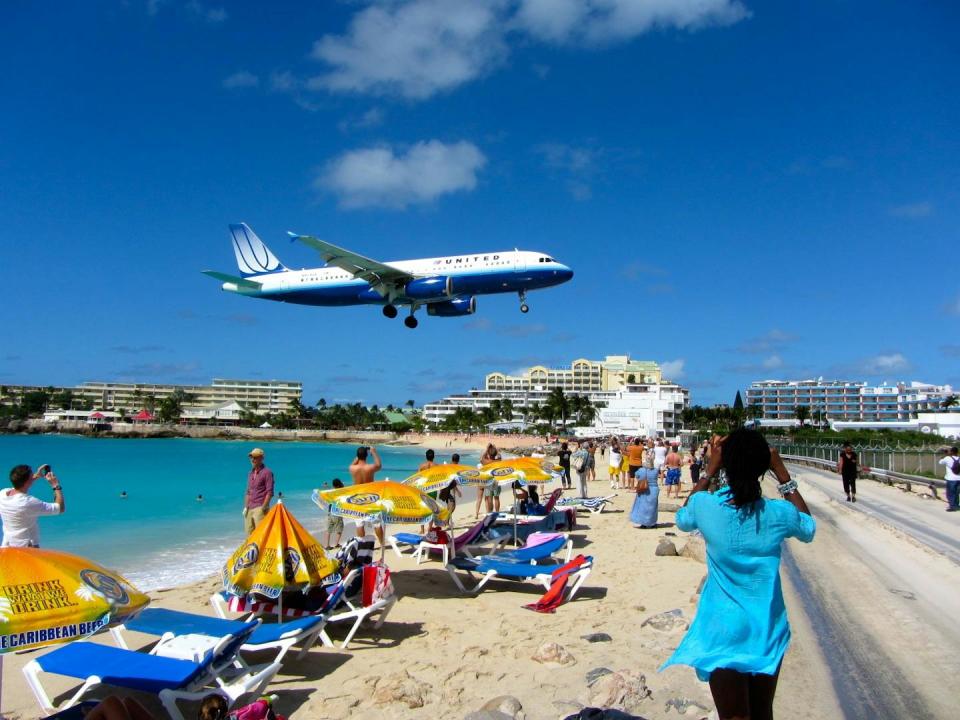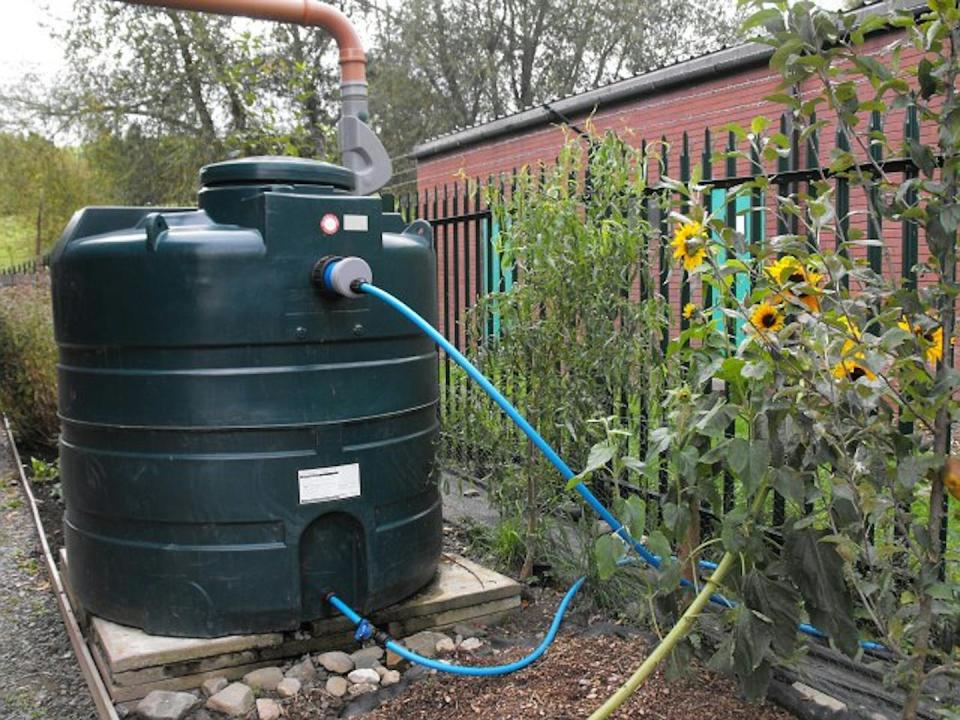In the popular imagination, the Caribbean is a paradise, an exotic place to escape to. But behind the images of balmy beaches and lush hotel grounds lies a crisis unlike anything residents have ever experienced.
The Caribbean islands are in a water crisis and their governments have warned that water scarcity could become the new normal.
Over the past five years, every island in the region has experienced some form of water scarcity. Trinidad, for example, is experiencing its worst drought in recent history, and residents are under water restrictions until at least the end of June 2024, with fines for anyone who breaks the rules.
Dominica, considered the wildlife island of the Caribbean for its mountain rainforests, is seeing significant declines in freshwater supplies and increasingly common water shortages. In Grenada, known as the Spice Island, drought has affected water systems across the island.

Jamaica also faces water restrictions and has had to resort to water shutoffs in recent years, limiting water availability to a few hours a day in some areas. St. Vincent and St. Kitts have had to ration water. Several water bans have been imposed in Barbados in recent years.
In fact, recent data shows that the Caribbean is one of the most water-stressed regions in the world.
I study the intersection of critical infrastructure and disasters, especially in the Caribbean. Safe water is essential for all human activities and public health. Therefore, it is important to understand the root causes of the water crises and find effective, affordable ways to improve water supply systems.
3 reasons why the demand for water is greater than the supply
Changing precipitation patterns and droughts are putting pressure on water supplies in the Caribbean, but demand for water is also exceeding supply for a number of reasons.
1. Rapid urbanization and industrialization
The Caribbean is one of the fastest urbanizing regions in the world. About three-quarters of the population lives in cities, and that percentage is rising, increasing pressure on public water systems.
At the same time, increased industrialization and commercialization of agriculture have deteriorated water quality and in some cases damaged vulnerable water catchment areas, affecting the soil’s ability to retain water.


This competing demand for limited fresh water has reduced streamflows and led to water being drawn from sensitive sources. In Dennery North, a large farming community in St. Lucia, water shortages have caused residents to draw water from rivers and other sources for their homes and farms.
Unregulated extraction of groundwater can also worsen the problem. Many islands depend on groundwater.
For example, 90% of the water supply in Barbados comes from groundwater, while in Jamaica this is 84%. However, increasing demand and changes in annual precipitation patterns affect the ability of aquifers or groundwater to recharge. The result is that supply cannot keep up with demand. This is a huge problem for Utila Island, located off the coast of Honduras, where current groundwater recharge is only 2.5% per year. By comparison, Barbados has a recharge rate of 15% to 30% of annual precipitation.
2. Water-intensive tourism sector
It’s no secret that the Caribbean is a popular tourist destination, and its tourism economies depend on large amounts of water.
Even during water rationing, water is first diverted to hotels and other tourist-dependent locations. This could leave local residents without water for hours or days and face fines if they violate usage restrictions.
Tourism not only increases water consumption, but also the pollution of water resources. Building golf courses to attract more tourists further increases the demand for water and the drainage of water through tourism.
3. Weak governance of water infrastructure
Another problem facing water systems is weak governance that leads to excessive loss of treated water before it even reaches the customer.
A well-performing water company typically has a water loss – also called non-revenue water – of less than 30%. In the Caribbean, the average non-revenue water is 46%, with some reaching as high as 75%.


The reasons range from a lack of appropriate management practices to inaccurate measurements, leaks and theft.
Climate change and extreme weather exacerbate water insecurity
These troubled water systems can struggle on good days. Worsening extreme weather, such as hurricanes and floods, can damage infrastructure, leading to extended outages and expensive repairs.
The Caribbean is the second most disaster-prone region in the world. The islands regularly experience earthquakes, landslides, devastating hurricanes and other devastating storms. As global temperatures and sea levels rise, the risk of extreme weather and storm surges that cause erosion, flooding and saltwater pollution increases.


Three months after Hurricane Maria struck in 2017, more than 14% of the Caribbean population was still without drinking water. Hurricane Dorian in 2019 caused Grand Bahama Utility Co. and the Water and Sewerage Corp. left the country with damages of U$54 million. A year after Dorian, WSC was “still in the process of returning operations to pre-hurricane Dorian levels.”
How hybrid rainwater harvesting can help
Improving access to water in the Caribbean means working on all these challenges. Better governance and investments can help reduce water loss due to theft and leakage. Government and community pressure and educating tourists can help reduce waste in hotels and resorts.
There are also ways to increase the water supply. One of these means being more strategic about how the islands use a practice the region has relied on for centuries: rainwater harvesting.
Rainwater harvesting involves collecting rainwater, often from where it flows off the roofs, and storing it for future use. It can replace irrigation, or the water can be treated for domestic use.


Currently, rainwater harvesting is not managed as part of the islands’ centralized water management system. Instead, households bear the costs of financing, building and maintaining their own systems. Finding technical support can be difficult, causing households to experience seasonal variations in water quantity and quality. This makes it difficult to identify risks to drinking water safety.
If rainwater harvesting were instead combined with central water systems in a managed hybrid water model, I believe it could help expand safe rainwater harvesting and address the region’s water challenges.
It is a relatively new concept and integrating decentralized sources can be complex, including requiring separate pipes, but it has potential to reduce water stress. Decentralized sources, such as rainwater harvesting, groundwater or recycled gray water, can serve as backup water sources during shortages or can provide water for non-potable purposes, such as toilet flushing or irrigation, to reduce the demand for treated water.
Engineers in Australia are weighing the potential of hybrid water systems to meet the challenges of delivering safe, secure and sustainable water in the future.
Fulfilling a human right on the islands
The World Health Organization has stated that access to sufficient, safe and reliable water supplies is a basic human right, and that to achieve this, water suppliers have a responsibility to provide sufficient quantities of drinking water.
Hybrid water systems can help ensure water safety and security for island communities and improve the resilience of water systems amid the human and environmental pressures facing the Caribbean.
This article is republished from The Conversation, an independent nonprofit organization providing facts and trusted analysis to help you understand our complex world. It was written by: Farah Nibbs, University of Maryland, Baltimore County
Read more:
Farah Nibbs does not work for, consult with, own shares in, or receive funding from any company or organization that would benefit from this article, and has disclosed no relevant affiliations beyond their academic appointment.